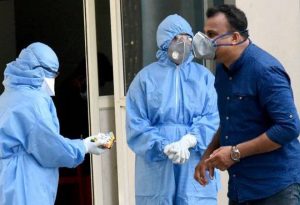
disha may be one of the poorest states in India but it has set an example of how to contain novel coronavirus epidemic. The Naveen Patnaik government of Odisha has put in place measures with timing and scale that helped the state keep the novel coronavirus cases in single digit till Wednesday.
Remember, even a missed case of novel coronavirus can leave thousands down with Covid-19. Patient-31 of South Korea is an example, being responsible for nearly 60 per cent of all cases in that country.
The Odisha government on Wednesday evening said total positive novel coronavirus cases in the state were five. Two of them have recovered leaving three active cases. The state has tested a total 900 people suspected to have Covid-19.
Return of people who attended Tablighi Jamaat congregation in the Nizamuddin area of Delhi in March has come as a challenge to authorities in Odisha. The good news is that as on Wednesday, 15 of 20 of the returnees tested negative for novel coronavirus. Contact tracing for the returnees of Tablighi Jamaat congregation is still underway.
That Odisha has shown how to live up to the challenge is a story to tell at least on the basis of evidence till date.
Odisha took off early. It put in place an “action plan” to deal with Covid-19 situation early in March. It set up Covid-19 helpline number before lockdown was announced. The state machinery propagated this helpline number leading to thousands of people calling up to seek information about the coronavirus infection.More than 72,000 calls had been received on Covid-19 helpline number 104 by March 22, a day before the nationwide lockdown was announced. Odisha had by then announced partial lockdown in eight cities which the government found more vulnerable to novel coronavirus outbreak.
On March 3, Odisha had launched a dedicated website, covid19.odisha.gov.in. The national portal came later. What is noteworthy is that Odisha reported its first novel coronavirus positive case on March 16.
The Odisha portal made it mandatory for all coming to the state to register on the portal. What helped Odisha keep people in mandatory quarantine of 14 days upon return from abroad was the promise of Rs 15,000 for adhering to the instruction. More than 4,000 people had got themselves registered on the website, the state health department had said earlier.
Many states have found it difficult to run essential services and presence of staffers in key government offices as the Covid-19 panic was across the groups of people. Odisha government countered this by incentivizing work in public offices including health department.
The Naveen Patnaik government announced that it would release advance salaries four months to government employees working in health sector – including doctors, paramedical staff and other healthcare workers. Advance salaries would be paid in April itself, the government said.
Another key announcement by Odisha government ensured that there was no panic “rush home” tendency among the people working outside the state.
The state government announced that it will bear the cost of stay and medical treatment of all the Odisha people stranded anywhere in India. The Naveen Patnaik government wrote to all state governments requesting them to help the people of Odisha stranded in their respective states.
It told them that the state government would bear the cost of stay and medical treatment during the 21-day national lockdown. Two special helpline numbers were launched for those stranded — 0674 2392115 and943891598 – contact a separate control room in Bhubaneswar.
Before novel coronavirus cases started surfacing in Odisha, the government reached out to people in smaller towns and villages asking everyone who has returned home since the outbreak of Covid-19 to stay in home quarantine. An estimated 84,000 people were put under home quarantine to contain novel coronavirus in Odisha.
Reports from Odisha suggest that around 7,000 isolation wards were prepared at panchayat level across the state should such a situation arises due to Covid-19 pandemic. Additionally, it was decided to set up a special 450-bed hospital Covid-19 hospital in Bhubaneswar to meet any contingency medical situation.
The way the Naveen Patnaik government of Odisha has responded to this pandemic shows it has learnt its lessons from past natural disasters. The 1999-cyclone was devastating for Odisha. Though, Naveen Patnaik was not the chief minister then – he assumed CMO in March 2000 – but the state machinery learnt its lesson that the new leadership rolled out effectively.
More than 15,000 people had died and 16 lakh rendered homeless in 1999 cyclone. However, in recent cyclones including those in 2014, 2017, 2018 and 2019, the death toll remained in single-digit despite huge loss of properties.
Leave a Reply